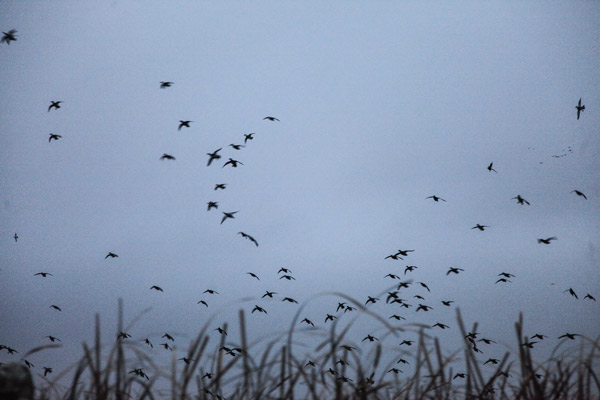July 01, 2015
By Brad Fenson

It was the classic day in Canada. The early October sunset created an ideal backdrop at the end of a perfect day. Six of us shot our limits of specklebelly and Canada geese after watching thousands of birds lift off the morning roost. In the evening we waded a wetland, and the mallards bombed us for two straight hours.
The diversity and opportunity to hunt waterfowl in Canada is mind-boggling. Even if you ignore the multitude of species available and just shot Canadas and greenheads, you'd likely set new personal standards for what a single hunt could provide.
Here's what you need to know to make your trip up north painless.
Advertisement
Where to Hunt: Canada is vast with lots of exploring to offer the adventuresome hunter. If you've never been, I'd highly recommend an outfitter. Good outfitters in Canada live on their reputation and word of mouth. They know local birds, how to spot them, get permission and be successful day after day.
If you're doing it on your own, the best place to start is by contacting the tourism departments in the province you are considering. They can provide info on historic migration routes, staging areas, accommodations, meals and other planning.
The most popular destinations have government Fish and Wildlife or Renewable Resources department websites with complete information for visiting hunters, covering everything from license requirements to accessing private lands.
Advertisement
 Getting Access: In the majority of provinces it is still illegal to pay for access. The system in place means everyone has an equal opportunity by knocking on a door and asking permission. This may be intimidating for some people but is the only way to access private-land hotspots.
Getting Access: In the majority of provinces it is still illegal to pay for access. The system in place means everyone has an equal opportunity by knocking on a door and asking permission. This may be intimidating for some people but is the only way to access private-land hotspots.
The best way to find landowners is with a land ownership map that can be purchased from the county or municipality where you plan to hunt. Some are available electronically and can be downloaded and kept on a mobile device.
As long as you have a good navigator, you'll always know where you are on the map and can ascertain land ownership. Some of the better search engines for finding people and phone numbers in Canada are whitepages.ca or Canada 411.
What to Tip: The standard outfitter tip would be 15 percent of the cost of the hunt. In most cases, the tip would be paid to the outfitter who then divides it among staff.
Canada Customs and Guns: Whether you're flying or driving, you'll have to pass through Canada Border Services where you will get checked by a customs officer to ensure you have documents and have not exceeded limits for what you can bring into the country.
You will need a valid passport. An officer can refuse you entry into Canada if your passport is set to expire within six months of your planned visit.
Bringing your shotgun into Canada requires filling out a Non-Resident Firearm Declaration form and signing in front of a Canada Customs Officer (do not sign the form previous to arriving at customs). You can bring up to three guns into Canada.
The form can be obtained from the Canadian Firearms Centre. U.S. regulations allow the export of 1,000 rounds of ammo per traveler, but most Canadian airlines have weight restrictions for ammo, which can be found at nrcan.gc.ca/explosives.
There is also a new electronic registration procedure for hunters traveling with guns and ammunition from the U.S. Go to ice.gov/cpi/faq for more information. If all this seems daunting, simply call or visit the U.S. Customs branch at the airport you're flying out of to make sure you have all the necessary paperwork.
 Proper License: Provinces allow people to purchase their licenses online or at most sporting good vendors. You also need a federal migratory bird license (good throughout Canada).
Proper License: Provinces allow people to purchase their licenses online or at most sporting good vendors. You also need a federal migratory bird license (good throughout Canada).
If you are planning on bringing your dog, you will have to provide veterinary certificates indicating shots and vaccinations are up to date. Your dog may need additional vaccinations to enter Canada.

